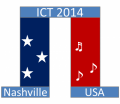Google Search
A5: Nanoscale and low dimensional effects
Whereas thermoelectric performance for Peltier coolers is normally limited by the figure of merit ZT, transverse thermoelectrics can achieve arbitrarily large temperature differences in a single leg even with inferior ZT by being geometrically tapered. In this regard, they function as infinite stage Peltier coolers. For Seebeck generators, transverse thermoelectrics can also be geometrically shaped into a planar daisy-chain geometry to generate arbitrarily large voltages from small waste heat thermal differences. To exploit the advantages of transverse thermoelectrics, we describe a band-engineered transverse thermoelectric with p-type Seebeck in one direction and n-type orthogonal, resulting in off-diagonal terms that drive the heat flow transverse to electrical current. Such materials are advantageous for microscale devices since their functional geometry is trivially scalable, whereas standard longitudinal thermoelectrics require both p- and n-legs and multiple contacts and are more complicated to scale. InAs/GaSb type II superlattices are theoretically calculated to have the appropriate band structure for use as a transverse thermoelectric. The thermoelectric figure of merit ZT is optimized over a range of InAs and GaSb layer thicknesses. Unconventional Peltier refrigerator and Seebeck generator geometries are introduced for transverse thermoelectrics, which have no analogue in standard longitudinal thermoelectrics. Although the estimated ZT values are low, a Peltier cooler made of InAs/GaSb superlattice can double its maximum achievable thermal difference by simple geometric shaping.
